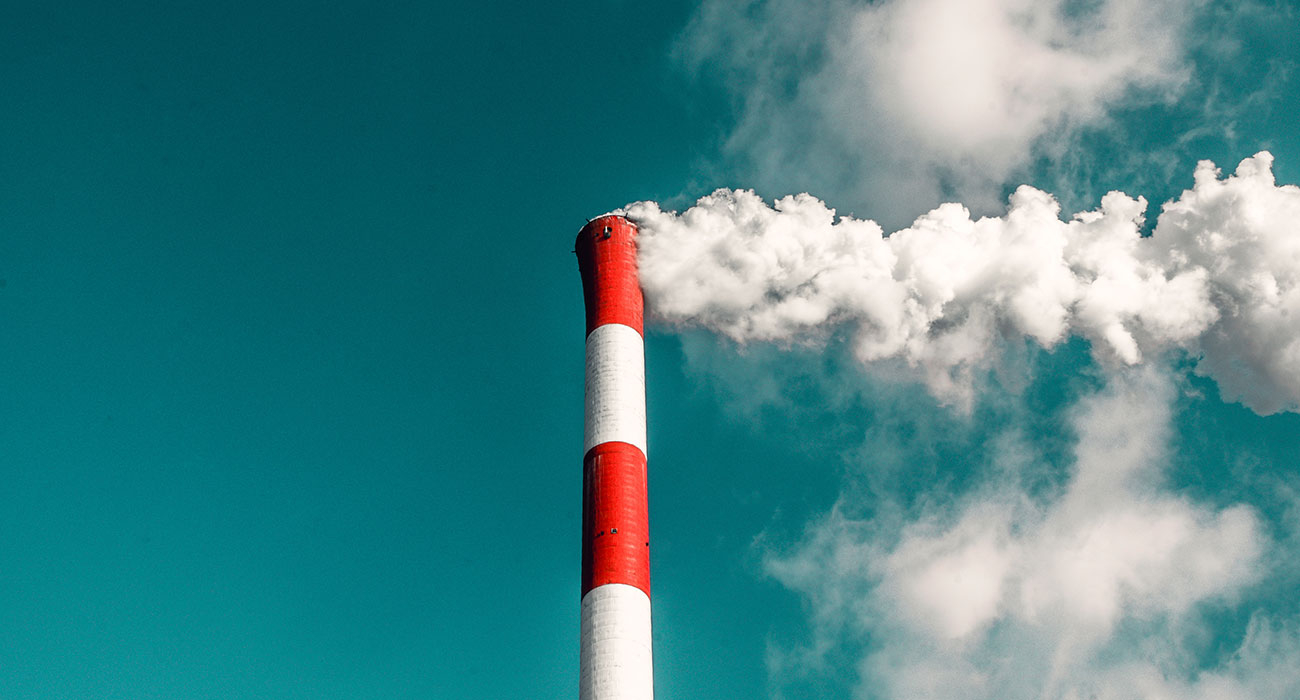
Dissolved? The end of incineration is near…
How much would the end of incineration contribute to climate protection? After the end of the atomic- and coal-power the end of incineration is near. The Ökoinstitut e. V. already calculated in 2014 that in 2050 only 10 incinerators in Germany would be necessary to dissolve worst wastes. Now the question in on the table how the transformation process will be run? Are there perspectives for chemical recycling? Who will invest in innovation? Only one day after the European election I had the honour to discuss this question with the incinerating industries on the 20th anniversary of the ITAD, the incineration association in Germany.
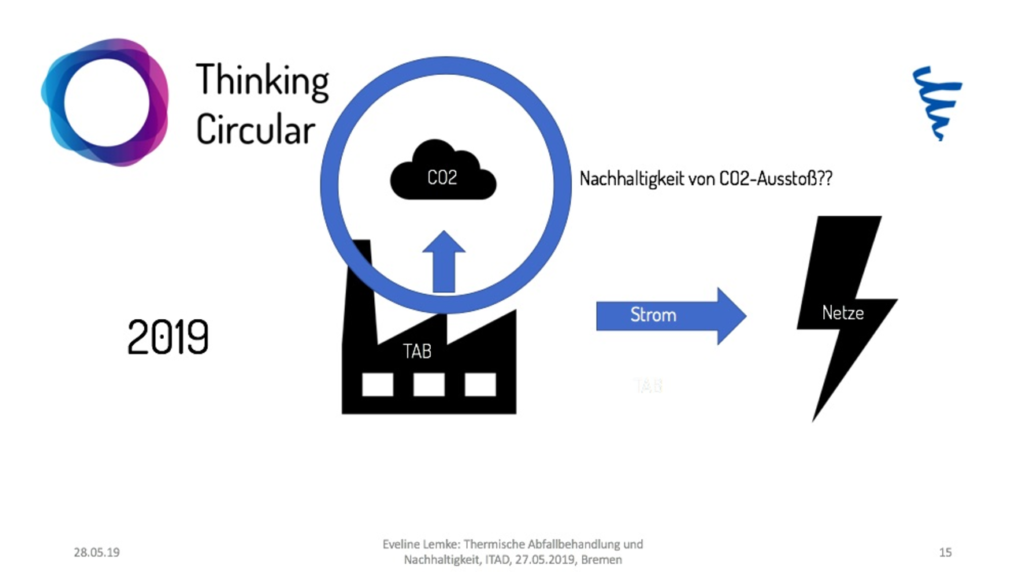
The result of the European parliamentarian election has shown: The young generation expects action in climate protection. And we carry responsibility for the next generation. Future is a privilege. It’s the privilege of the young generation. So how do incineration managers answer to the young voters? 14 million tonnes of carbon are exposed to climate, each year. Wouldn’t this be a good act of climate protection to take the incinerators off grid?
We live in heated times. Not only to be spoken for climate questions. Greta Thunberg has started the “Friday for Future” movement and this is just one group that puts pressure on the incinerators. The EU commission has started strategic taxonomy for sustainable investments. This means that there will be no funding for waste-to-energy plants in the future any more. Let’s have a view on the end of incineration:
Five trends and five points to make:
Trend number one: The green transformation can’t be stopped, but innovators should take part in it!
The incineration can be part of the transformation and has already been part of the green transformation process. The main object was to extract poison from the environment by burning it safely. A world-wide ban of land-fills is overdue. Today we know that depositing wastes in land-fills will cause factor 23 more gases driving climate change. But we can see many countries that shut down for imports of wastes, like China or Malaysia. The now send back that garbage to the countries of origin. This causes work for the incinerators. Actually they have a lot of material to burn. Also the obligation for SME and all companies to collect and handle wastes properly has driven the amount of waste for incinerators to fire. Here we can clearly see the work for innovationsmanagers of the Circular Economy.
In general times are heated up: global policies, globalisation and takes over old colonial powers and causes additional conflicts. New Monopols or Oligopols are driven by heterogene and periodical processes of restructure. The new modernism is constantly disruptive. Disruption is not only caused by policy makers but also by technology. How to manage innovation successfully has to be answered and can be answered using tools of systems thinking and scenario planning.

Let’s follow Kontratieff’s thoughts on the long economic waves caused by technological changes. Innovations like electricity, trains, telecommunication and others have driven developments. Green technologies are already driving global growth markets, but haven’t been in the focus of beging innovation factors. The economic perspective can be sharpened here. People are already noticing that these technologies are changing their every day lives to the good or better. As a result the political green movement is growing.
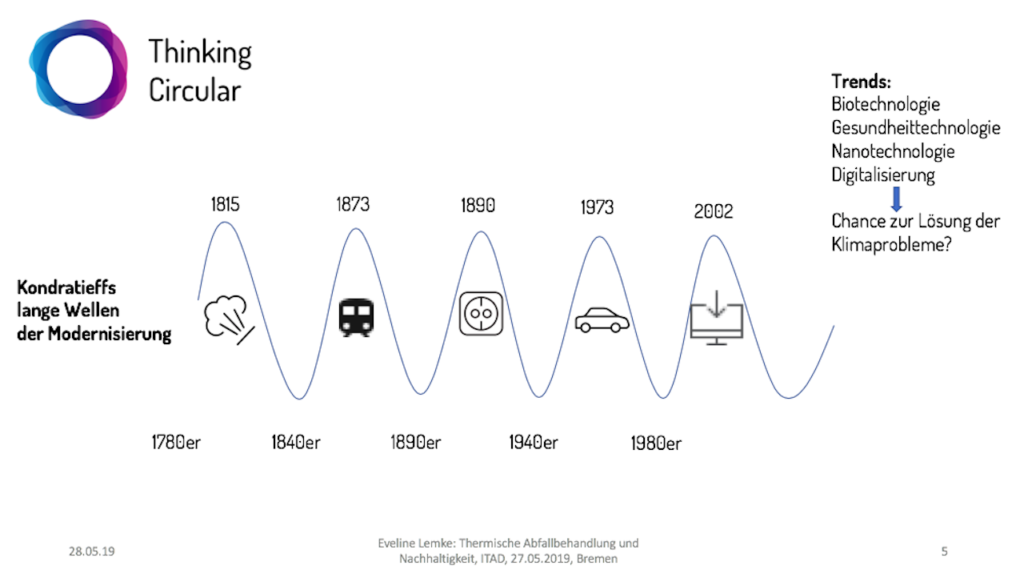
She waves of modernisation caused by green innovation can be described in shorter waves. Kontratieff described modernisation cycles in 30 to 40 years. Now the cycles have a length of 10 years only. 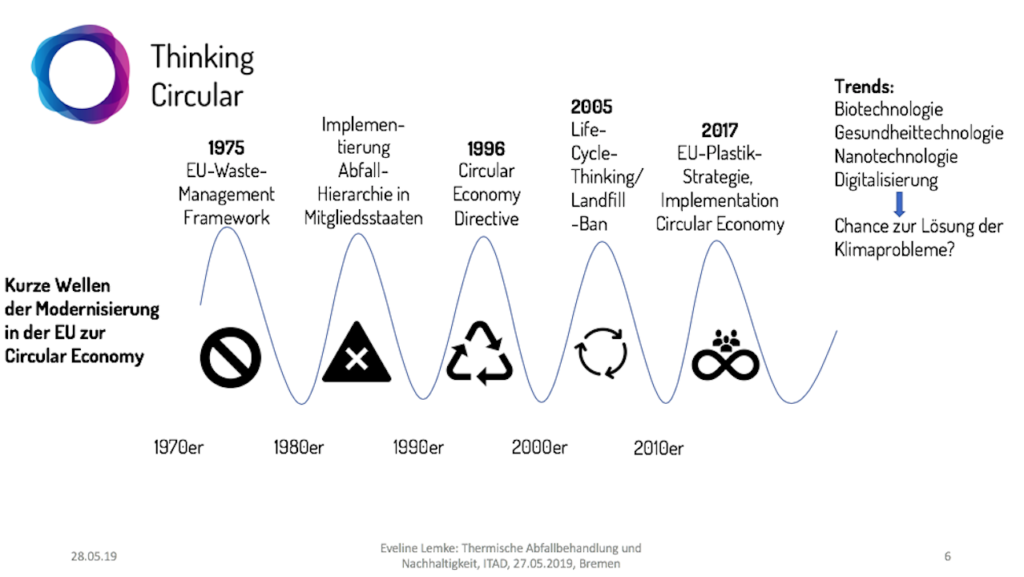
And of course political moments add pressure. The next picture shows the political symbols of technological movements for green technologies. They appear every 10 years to be stronger.
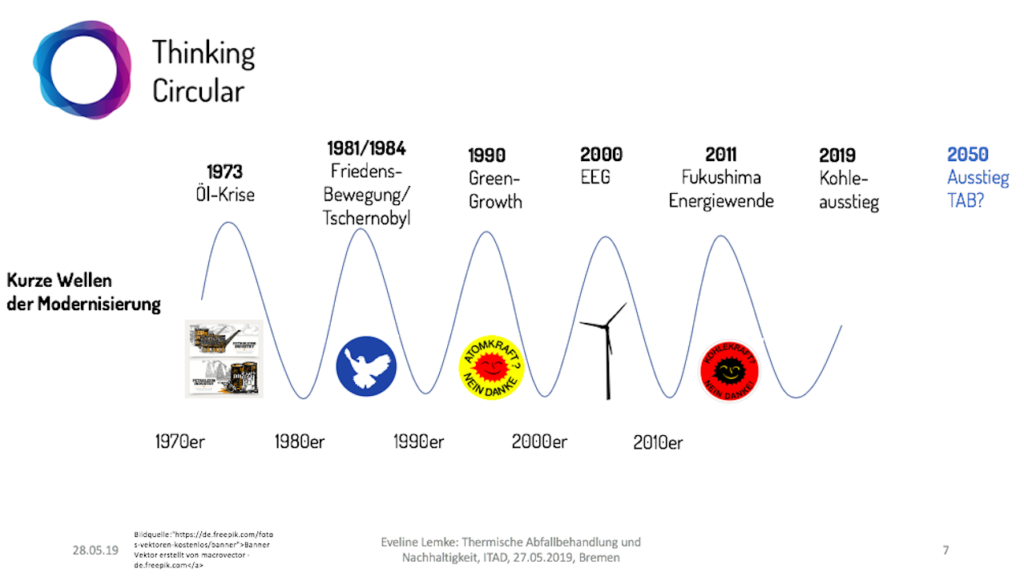 Trend number two: Pressure is global – the great acceleration
Trend number two: Pressure is global – the great acceleration
World population, real GDP, investments, urban population etc. are rising exponentially. On the other hand our earth system ist coming to an edge. Carbon is driving climate change, we loose land space for ecological recovery and earth systems are braking down. This pressure has reached people who die in arid areas of the world, can’t breathe air in the Metropole of the world or drink clean water any more. As a reflex for visible change people vote for nationalistic parties that promise a stand-still. But transformation is in the need of balance stimulant and resonance from all systems not only from earth systems. In the anthropozhene humans are the factor to change developments. The global situation is not in balance but shaking.
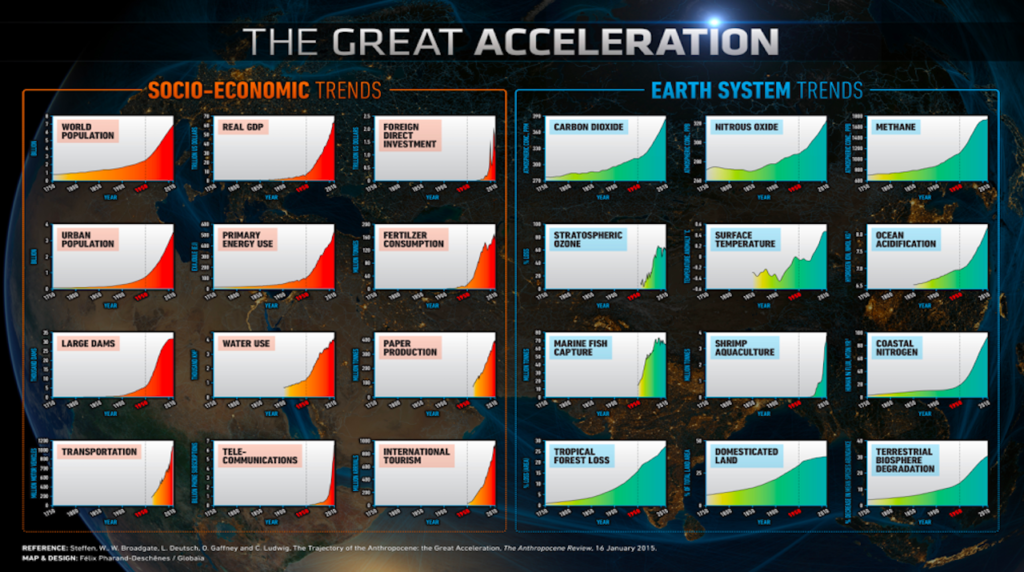
Trend number three:
Sustainability is the new global constitution
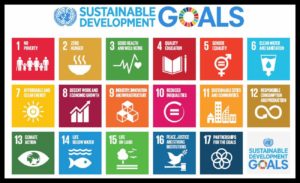
Quelle: Vereinte Nationen
Business cases ignoring sustainability by not survive. But they are not understood jet. The challenge to explain 17 Sustainability Goals is hard work and it is not without conflict.
The SDGs are our new global constitution. We should check all our action for compliance with SDGs and priorities might be different in different times in different places. 70 years of our German Grundgesetzt have shown how we can make it possible to drive developments to the better from the common ground of regional governance and by the power of the people. In the case of the sustainability goals they are guiding visions world wide.
Trend Nummer 4: Die Circular Economy bietet ein neues ökonomisches Modell!
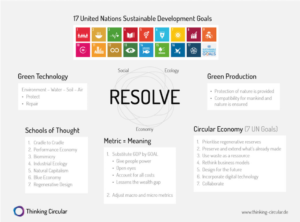 „Material Economics“ are highly underestimated. But now they are in the focus. We must emphazise that is is an economic theory that can change the world. And we can’t fully differentiale questions of ownership and social balance from material economics. The interconctedness of factors must be worshipped economically. The “Real economy” is still the exchange of things and speculation about their value for the future. This can’t be ignored.
„Material Economics“ are highly underestimated. But now they are in the focus. We must emphazise that is is an economic theory that can change the world. And we can’t fully differentiale questions of ownership and social balance from material economics. The interconctedness of factors must be worshipped economically. The “Real economy” is still the exchange of things and speculation about their value for the future. This can’t be ignored.
For this reason the United Nations have acknowledged this and announced 7 goals for the Circular Economy. Scientifically based on Performance Economy, RESOLVE-principle, circularity factor, Biomimicry or Cradle-to-Cradle.
Circularity shows that only 9 % of our material management ist circular. 91 % of all material is exposed to our environment. Wasted and driving climate change.
Trend number five: The future of chemical innovation is open!
Chemical associations like the VCI oder BDI (industry association) have made clear in papers like “Chemie 4.0” how innovation in different sectors can be made. The German ministry for science hat started a new programme (7. Energieforschungsprogramm) to develop suitable technologies.
Big changes can be expected in many sectors, especially electric mobility, Digitalization, industrial biotechnology or others. And new chemicals must be defined for their quality and practicability.
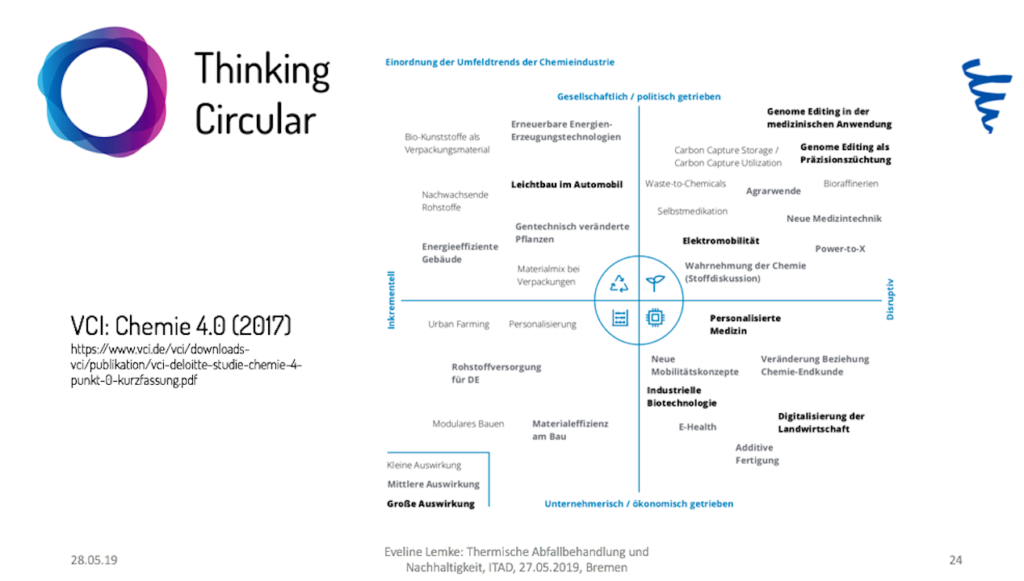
Therefore we can summarise into five statements for the end of incineration:
Statement number one:
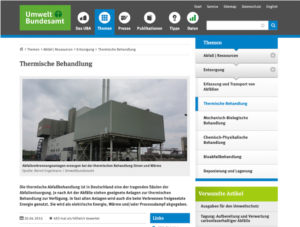 Incineration is a base for safe handling of hazardous wastes. Incineration dissolves problems of our Konsumtion culture. But it leaves 45 % of ashes and dusts or carbon to be exposed to climate or the environment.
Incineration is a base for safe handling of hazardous wastes. Incineration dissolves problems of our Konsumtion culture. But it leaves 45 % of ashes and dusts or carbon to be exposed to climate or the environment.
Statement number two:
Circular Economy and Cradle-to-Cradle will dissolve incineration as a useless and hazardous technology to climate. Time is coming, but we don’t know when this point will be reached. Science scenarios show that in 2050 only 10 incinerators will be necessary to burn hazardous wastes.
Statement number three:
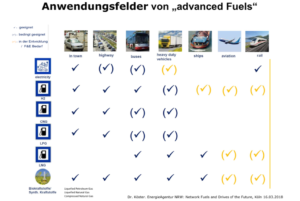 Incineration technologies need a future strategy. Without strategy a resilient survival for the industry will not be possible. Future „Stranded Assets“ can be seen. Such compensation must be discussed and bargained to set free investments and show the vision for new industries. Is there a chance for a chemical recycling, driven by incineration industries?
Incineration technologies need a future strategy. Without strategy a resilient survival for the industry will not be possible. Future „Stranded Assets“ can be seen. Such compensation must be discussed and bargained to set free investments and show the vision for new industries. Is there a chance for a chemical recycling, driven by incineration industries?
Statement number four:
Transformation is in the need of clear business cases. While the innovation consists of new technologies the business case must anticipate human response in the markets. And what do we know about future wastes in times of transformation? How can we gain information? How can we make scenario planning of valid scientific basis? It’s time to gather data!
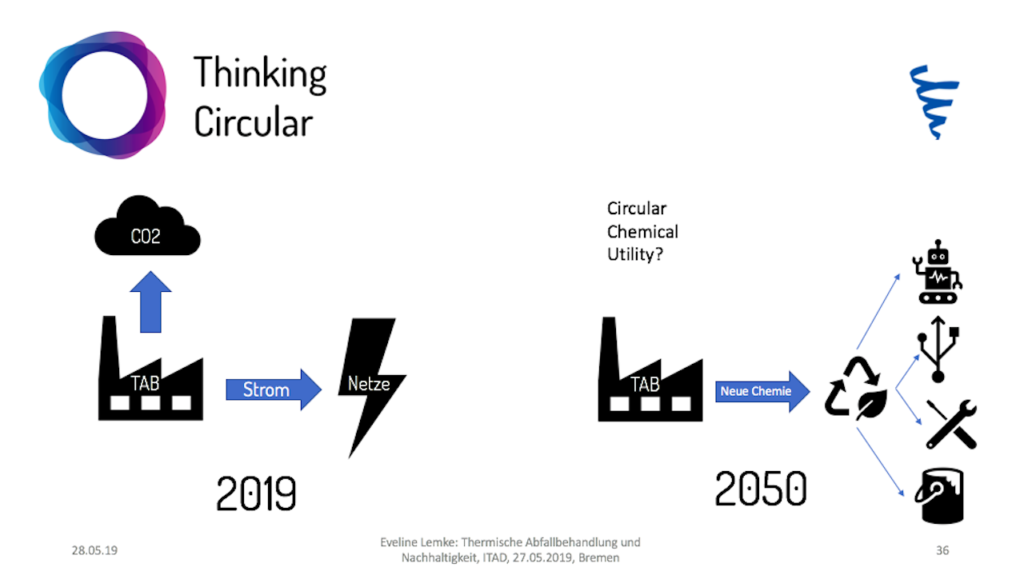
Statement number 5:
The transformation is a long way. Nobody can make it on its own. Incineration industries must create new econetworks to become creative innovators and set the rules in time with policy makers. It’s time to create – let’s go!
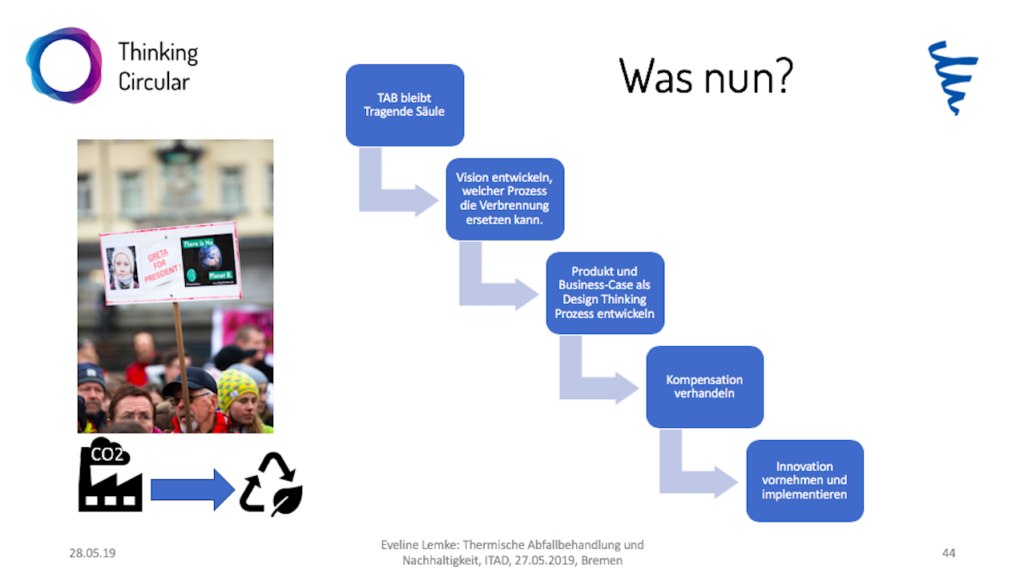



No Comments